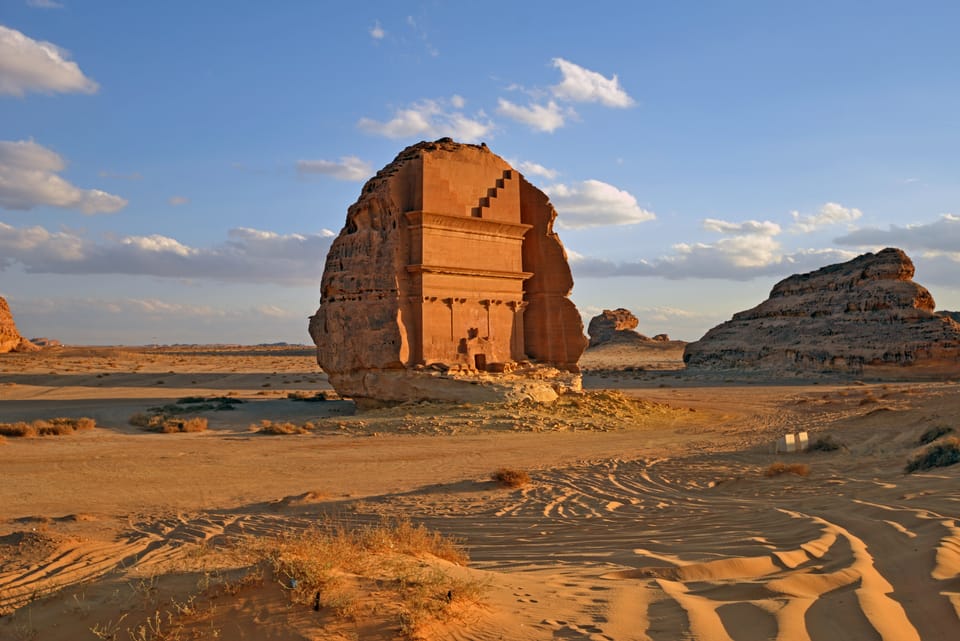🧠 Flavors of Advancement — Allah ﷻ Unlocks & Nonlinear Civilizations

“Say, travel through the land and observe how was the end of those before you.” (Q 30:42)
“Have they not traveled through the land so they may have hearts with which to reason…?” (Q 22:46)
Executive Thesis
Civilizations can be equally advanced yet differently composed. What we often call “chance” revolutions are, in an Islamic framing, Allah’s ilhām—bestowed openings that bend a people’s imagination toward distinct scientific branches. Our present branch (electrons → semiconductors → networks) is only one staircase among many. Recognizing this frees us from the arrogance of a single ladder and lets us see the past not as a dim vestibule to ourselves, but as a gallery of alternative apexes, each with its own grammar of mastery.
Foundations — Ancient Capability, Modern Forgetting
Here is the claim, simple and liberating:
Human civilizations have reached profound capability again and again—often along branches unlike our own—and much of that capability was later lost. Accepting this does two things at once: it renders antiquity’s achievements plausible without mystification, and it makes our era’s breakthroughs feel less inevitable and more contingent—more gift than guarantee.
I develop this by weaving together Qur’anic history, a time-sense measured in lifetimes rather than numb millennia, and a working model of unlocks—non‑linear insights that open entire domains, like the benzene ring in chemistry or gradient-encoded MRI in medicine. This is not an invitation to romanticize; it is an insistence on widening the range of reasonable hypotheses about how knowledge actually grows.
From an Islamic vantage, human “unlocks” are ultimately bestowals—ilhām and ḥikmah: “He grants wisdom to whom He wills” (Q 2:269); “He taught by the pen” (Q 96:4); “The Most Merciful—taught the Qur’an, created man, taught him eloquence” (Q 55:1–4). The Qur’an speaks of inspirations beyond prophecy—“We inspired the mother of Moses” (Q 28:7); “Your Lord inspired the bee” (Q 16:68)—reminding us that insight itself arrives as gift.
Part I — Grounding in Revelation and History
The Qur’an treats ʿĀd and Thamūd not as tale but as moralized history. ʿĀd, linked to al‑Aḥqāf in the deep south of Arabia, is portrayed as towering in body and in works—“lofty pillars”—a people of reach and pride called back to tawḥīd by Hūd. Thamūd, associated with al‑Ḥijr (Madā’in Ṣāliḥ / Hegra), carved dwellings in rock, and received a public sign through the she‑camel sent with Ṣāliḥ. These portraits are not blueprints for an archaeologist; they are cycles—ascent, intoxication, warning, refusal, collapse—etched for travelers to read in stone.
The Qur’an also ties particular crafts to prophets: iron softened for Dāwūd, the wind subjected to Sulaymān, armory taught as skill. Capability is not merely accumulated—it is taught, given. If one accepts the Qur’an’s truth-claims, one must accept the plausibility of early, organized, high-skill labor in Arabia and beyond—enough to overturn the lazy idea that “early” means “simple.”

But time blurs. “3,500 years ago” is a number; lifetimes are felt. Imagine thirty‑six lives lived end‑to‑end: that lands you roughly in the era of Mūsā. Add a few dozen more and you recede into the world of ʿĀd and Thamūd. The point is not precision; it is proportion. In that light, consider: by Mūsā’s day, the pyramids were already ancient—the Great Pyramid standing for well over a millennium. Monumental logistics—surveying, quarrying, transport, precision placement—were not science fiction; they were civic muscle memory. If the Nile valley attained such forms, why should Arabian polities be presumed incapable of their own peak expressions?
The interim conclusion is plain: antiquity shows repeated peaks of capability. The “uniform backwardness” we project across millennia is a failure of our memory, not of their minds.
Part II — Different Trees, Different Fruit
Every age breathes a zeitgeist—a set of intuitions about what questions are interesting and what answers are even thinkable. We do not merely stack gadgets; we choose problems. Within that climate, every so often, an unlock arrives: not the next rung, but an entirely new staircase. Once a society steps onto it, the slope of progress changes; funding, prestige, apprenticeship, and imagination re‑align. In a different cultural matrix, other unlocks would have surfaced first, and history would have branched elsewhere.
Islam names the contingency behind this: ilhām and qadar. Human striving is real, but fruition is granted—“You did not throw when you threw, but Allah threw” (Q 8:17). The decisive key can lie inches from a culture’s fingers for centuries until, by permission, someone sees it. Then a door that wasn’t there a second ago is suddenly obvious to everyone.
Two scenes illustrate the pattern.


A winter evening, a dozing chemist, a serpent biting its tail. In the popular retelling, Kekulé glimpses the ring and benzene’s oddities make sense at once. Whether the dream is literal or lore, the conceptual circle is the unlock. Aromatic chemistry blooms, and with it dyes, polymers, pharmaceuticals—a flood of modern materiality. Would methodical tinkering have gotten there? Perhaps—decades later. The distance between a puzzled laboratory and an industrial epoch was one slender insight long.
Another scene. A restaurant, a napkin, a question misheard by its own field. NMR was for spectroscopy—probing molecules, not bodies. Paul Lauterbur imagines encoding space with magnetic gradients. Peter Mansfield makes imaging fast enough to matter. Raymond Damadian insists tissue contrasts carry clinical truth. The result—MRI—rearranges medicine. Without that gradient insight, we might still be staring at bones and density, calling it the whole picture. The unlock made a new picture possible—literally.


Such moments have a familiar fragrance. Otto Loewi dreams the design that proves chemical neurotransmission. Niels Bohr, in beloved anecdote, dozes toward orbits. Whether in sleep or at the margins of attention, Allah permits the key to be seen, and a branch of knowledge blooms that was previously invisible.
Exhibits — Stones That Refuse to Fit a Single Ladder
I am not asking you to swallow counterfactuals. I am asking you to look. Not at the ordinary, but at a handful of stubborn objects—pieces whose existence is easy to verify while the full period‑faithful workflow from quarry to finish remains debated.
![r/ArtefactPorn - Predynastic Egyptian Diorite Jar 3100 B.C [2560x2560]](https://preview.redd.it/predynastic-egyptian-diorite-jar-3100-b-c-2560x2560-v0-jn2m8nw26ybf1.png?width=640&crop=smart&auto=webp&s=bf4f75b43874972ed235511fad245bd07f93f1c7)
In Cairo and London, the hard‑stone vessels sit quietly: diorite, porphyry, granite. Run your eyes along their interiors—concentric, coaxial, thin‑walled—as if turned against a fixed tool. Experimental archaeology can rough a cup with copper tube and abrasive; it has even drilled granite convincingly. But take a raw boulder to a razor‑thin, deep‑interior, high‑precision vase using only Old Kingdom‑credible kit, end‑to‑end, under scrutiny—and publish it. That full benchmark remains rare enough to matter.

Nearby in Saqqara, the Sabu Disk rests like a riddle: a tri‑lobed wafer in brittle schist, hub and rim intact where clumsier hands would snap it. Labels confess the obvious: function unknown. Try, with strictly period tools, to carve an identical disk from raw schist repeatably. Between the object and our confidence lies a gap, and in that gap is precisely the room for another branch.

Walk down into the Serapeum and feel scale change the air. Granite boxes the size of vehicles, lids by the tens of tons, set square in subterranean corridors barely generous to a person. The problem is not just carving; it is choreography—descent, pivot, seat—underground. Proposed pieces exist (rollers, sand-bedding, clever ramps), but an end‑to‑end, period‑faithful demonstration at recorded weights is still elusive. The objects remain, calm and unbothered by our diagrams.

Travel to Lebanon and face Baalbek. Podium stones around three‑quarters of a thousand tons already placed; in the quarry, unfinished monoliths tipping and exceeding a thousand. Moving masses at that scale isn’t merely “more” of the same; each gradient, each bearing surface, each final set is a first‑principles problem. Summaries admit uncertainty. The stones decline to blush.
Fly thin air to Puma Punku. Andesite blocks meet like ideas; repeated internal profiles, clean arrises, cast‑metal cramps stitched into stone; a thick sandstone platform that reads like a single held breath. The impression is not one‑off improvisation, but a template grammar applied at altitude. Reconstruct—quarry to tool to fit—the full fidelity of a module with strictly period‑credible means, and show it to the world. Until then, a sensible person leaves conceptual space for a branch that prized stone as we prize silicon.
None of this pleads for lasers or little green men. It asks you to release the tyranny of a single ladder. Our civilization ran the table on electrons; theirs may have run it on stone—rotation, transport, mass choreography, interlock. That is not “backward.” That is different.
The Theory — Flavors of Advancement
Unlocks are contingent. A single idea can ignite a century. Encode space with gradients births MRI; true circularity by rotation makes stone sing. The Qur’an’s grammar for this is simple—and bracing: effort is owed, fruition is granted.
Branches, not ladders. Once an unlock appears, a society compounds in that domain. Institutions, rites, and aesthetics converge on what it does best. From the outside, the result looks alien: an underground choreography of granite; a mountain softly hollowed; a forest of pillars. From the inside, it feels inevitable.
Loss is normal. Tacit crafts are fragile. Grammars die when their guilds do. The Qur’an’s injunction to travel and observe ends is a warning about the perishability of capability as much as it is a sermon about pride.
Our present is parochial. To call all prior peoples “backward” because they did not climb our staircase is to commit a branch error. They ascended elsewhere; some of what they achieved we still cannot cleanly reproduce under their constraints. That is not a scandal. It is a clue.
Answering the Skeptic, Fairly
“Experimental archaeology has answers.” It has many partial answers—and they are valuable. But the most extreme cases still lack complete, period‑faithful, end‑to‑end demonstrations. The gaps are not an indictment of the field; they are the very space in which an alternate branch can be responsibly hypothesized.
“Modern machines can do it—so what?” Of course a diamond tool and a crane can mimic an outcome. But that does not tell us how or why a culture first prioritized and systematized those outcomes, nor does it dissolve the open steps in a rigorous ancient workflow. A back‑projection with modern gear is not the same as a recovered grammar.
“Isn’t this sensational?” No. The claim is modest: multiple flavors of advancement are possible, and the Qur’an itself urges us to test this by walking the ruins with our minds awake. Sensationalism is the opposite—a demand that one ladder must explain everything, everywhere, all at once.
Travel the Land
If you want to feel this rather than merely assent to it, go. Stand before the hard‑stone vessels in the Petrie and let your eyes trace an interior curve so clean your fingertips itch. Read the small plaque beneath the Sabu Disk and notice how little certainty anyone claims. Descend into the Serapeum, count the paces, picture the turn, imagine the set. Step between the Trilithon and the quarry at Baalbek and keep your skepticism intact; it will do you more good than credulity. Walk the blasted geometry of Puma Punku, breathe thinly, and admit what you know and what you don’t.
Then, when your feet are sore, recite Q 30:42 aloud. Let the stones untelescope your sense of time.
Pointers for the Patient
If you wish to study further, look for Flinders Petrie on granite drill cores and feed rates; Emery on archaic vessels and rotation against fixed tools; D.A. Stocks for careful experiments with copper and abrasive; museum corpora on Egyptian stone vessels; and technical metrology on high‑precision artifacts where available.
Closing — A Duʿāʾ for Beneficial Insight
O Allah, Opener of what is hidden, grant us knowledge that benefits. Let us travel with humility, observe with justice, and preserve what You unlock. Make us grateful heirs to many branches, not proud owners of one.